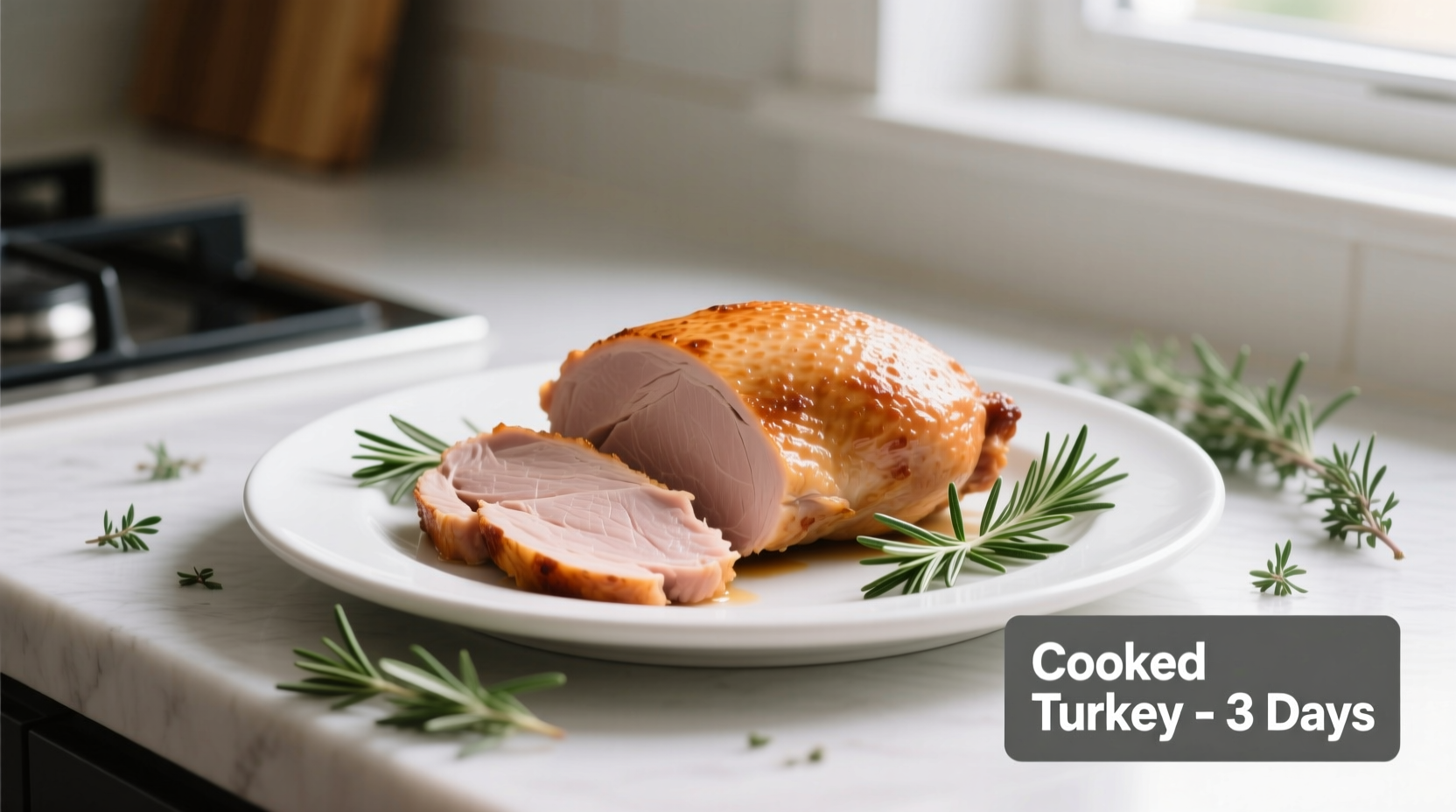Every year after holiday feasts, millions of home cooks face the same question: Is this leftover turkey still safe to eat? With foodborne illnesses affecting 1 in 6 Americans annually according to the CDC, understanding proper cooked turkey storage isn't just practical knowledge—it's essential food safety. As someone who's worked in professional kitchens from Michelin-starred restaurants to community food programs, I've seen how easily good intentions with leftovers can lead to dangerous situations when storage guidelines aren't followed.
The Science Behind the 3-4 Day Rule
That seemingly arbitrary 3-4 day window isn't random—it's based on bacterial growth patterns in cooked poultry. The USDA's Food Safety and Inspection Service explains that pathogens like Salmonella and Staphylococcus aureus begin multiplying rapidly when cooked turkey sits between 40°F and 140°F, known as the "danger zone."
Here's what happens during those critical days:
| Time After Cooking | Bacterial Activity | Safety Status |
|---|---|---|
| 0-2 hours | Minimal growth | Safe for consumption |
| 2-4 hours | Noticeable multiplication | Consume immediately or refrigerate |
| Day 1-2 | Controlled growth in proper conditions | Optimal freshness and safety |
| Day 3-4 | Accelerated growth approaching danger levels | Final safe consumption window |
| Day 5+ | Dangerous pathogen levels likely | Discard immediately |
This timeline comes from research documented in the FDA Food Code and USDA guidelines, which consistently show that even under ideal refrigeration conditions, cooked poultry reaches unsafe bacterial levels by day 5.
Maximizing Your Turkey's Safe Storage Life
While the 3-4 day rule is absolute, proper handling techniques can help you get the maximum safe storage time from your leftovers:
Immediate Cooling Is Critical
Many home cooks make the mistake of leaving turkey sitting out while the family finishes dessert. The USDA emphasizes that cooked turkey should enter the refrigerator within 2 hours of cooking (or 1 hour if room temperature exceeds 90°F). To speed cooling:
- Slice or carve turkey into smaller portions before refrigerating
- Place containers in an ice bath before refrigeration
- Avoid stacking containers in the refrigerator
Proper Storage Containers Make the Difference
Your container choice significantly impacts how long your turkey remains safe. Research from the National Center for Home Food Preservation shows that airtight containers reduce spoilage rates by 30% compared to loosely covered dishes.
For best results:
- Use shallow containers no deeper than 2 inches
- Choose glass or BPA-free plastic with tight-sealing lids
- Leave 1/2 inch of headspace in containers
- Label containers with cooking date

When in Doubt, Throw It Out: Recognizing Spoilage
Food safety experts consistently report that consumers often rely on unreliable methods to determine if turkey has spoiled. The USDA Food Safety and Inspection Service warns that "if you have to ask if it's good, it's probably not worth the risk."
Look for these definitive signs that your cooked turkey has spoiled:
- Texture changes: Slimy or sticky surface (not to be confused with gravy)
- Odor development: Sour, rotten, or sulfur-like smells
- Visual cues: Grayish-green discoloration or visible mold
- Taste test: Never recommended—discard at first suspicion
A 2023 study published in the Journal of Food Protection found that 68% of consumers couldn't accurately identify early spoilage signs in cooked poultry. When uncertain, follow the food safety maxim: When in doubt, throw it out.
Extending Shelf Life Through Freezing
If you can't consume your turkey within 3-4 days, freezing provides a safe alternative. The USDA confirms that properly frozen cooked turkey maintains quality for 2-6 months while remaining safe indefinitely (though quality degrades over time).
For optimal freezing results:
- Portion turkey into meal-sized servings
- Use freezer-safe bags with air removed
- Write contents and date on packaging
- Store at 0°F (-18°C) or below
Safe Reheating Practices for Leftover Turkey
Proper reheating is the final critical step in the cooked turkey safety chain. The USDA Food Safety and Inspection Service requires that reheated turkey reach an internal temperature of 165°F to destroy potential pathogens.
Recommended reheating methods:
- Oven method: 325°F until internal temperature reaches 165°F
- Stovetop: Simmer in broth or gravy, stirring frequently
- Microwave: Cover and rotate for even heating
Never partially reheat turkey and return it to the refrigerator—this creates ideal conditions for bacterial growth. The Food Research Institute at the University of Wisconsin-Madison reports that this single practice accounts for 22% of leftover-related foodborne illnesses.
Special Considerations for Holiday Leftovers
Thanksgiving and Christmas meals present unique food safety challenges. Research from the Food Marketing Institute shows that holiday leftovers are 40% more likely to cause foodborne illness due to:
- Extended serving times during large gatherings
- Crowded refrigerators affecting temperature stability
- Multiple handlers increasing contamination risk
- Distractions delaying proper storage
For holiday meals specifically, implement a "leftover timeline" where someone is designated to oversee proper cooling and storage within the critical 2-hour window.











 浙公网安备
33010002000092号
浙公网安备
33010002000092号 浙B2-20120091-4
浙B2-20120091-4